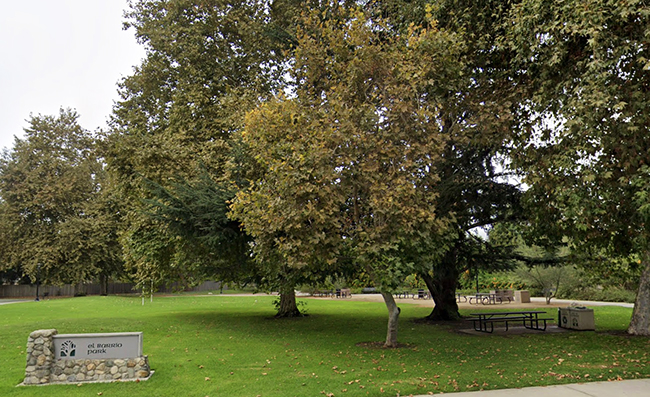Water dollars and sense: our position
by Freeman Allen
It’s no wonder control of our water supply is a big issue in Claremont these days. Water rates have doubled in the past 5 years for the typical user—and in the last 4 years for heavier users. Water is going to become even more expensive in coming years, and rates will further escalate under the Golden State Water Company (GSWC) monopoly.
Our rates are set by the California Public Utilities Commission whose decisions guarantee GSWC a stable profit. If we conserve more water, the company can automatically increase rates without further approval to maintain its profit margin. So rates have skyrocketed in recent years. It makes sense to gain control so we can set our own rates and policies. That’s why our city council voted unanimously to look into taking control of our water supply system. They commissioned an appraisal of the system, with the report expected in October. But will we be able to afford the acquisition, and if we can, how do we manage the system?
One reason our rates are high is “regionalization.” Our rates are not based on what it costs to supply water to Claremont, but on an average cost to supply a group of communities across San Bernardino, Los Angeles, Orange and Imperial Counties. Communities in the desert, as well as Seal Beach and high desert communities near Victorville, are included in our region. If new facilities are constructed anywhere in the region, we must pay a share of the cost. The nearby town of San Dimas is in our region. They must import all their water, and imported water costs about 4 times as much as local well water. One would think San Dimas rates should be higher than in Claremont where more that half our water comes from local wells, but under regionalization the rates are identical.
A good way to estimate the penalty of not owning our own water system is to compare Claremont rates with those in neighboring La Verne, where the city owns and manages its water system. They can, and do, set their own rates based on actual costs.
The city of La Verne gets water from local wells that is imported from central California, just as we do (although they must use more imported water). The systems are of about the same age. The number of households in Claremont (11,600 in the 2010 census) is nearly the same as in La Verne. Claremont has about 400 more. But typical Claremont residents must pay 84 percent more for water than typical La Verne users, even though they may live just across the street from each other. Actually, Claremont rates should be lower than in La Verne because we use less imported water. If that is taken into account, Claremonters pay about double the rate of La Verne residents.
The amount of water used in a typical residence is also similar in Claremont and La Verne. According to GSWC typical residential usage in Claremont is 20 ccf per month (1 ccf = 748 gallons) and the corresponding water bill is $115, including the service charge for a 1-inch meter. If the bills in Claremont were cut in half (to correspond to La Verne rates), Claremonters would save $0.7 million per month.
If we owned our own system, this money could be going toward purchase of the system rather than as a profit for GSWC shareholders. Water bond interest rates are currently under 4.75 percent for a 30-year bond, so $0.7 million per month could pay for a bond of at least $134 million.
Of course, we don’t yet know the appraised value of the system, nor what it would take to acquire the system by eminent domain. Reports of negotiations between GSWC and Claremont, a few years ago, mentioned $86 million. It might even be possible to include the cost of establishing some water reclamation plants in the bonds—and these can qualify for grants to help pay for them. That would decrease our dependence on costly imported water, decrease water costs and make Claremont more sustainable.
However, some additional funds may be needed for deferred improvements on the Claremont system. Under their municipal water system, La Verne has installed more emergency storage capacity. Their former utilities department director reports that the La Verne system has been better maintained. The need for Claremont to catch up, at higher cost, is part of the case GSWC is making for increased rates.
If our system is old and in need of repair or replacement, being part of the region might mean others share in the cost of the update. But whatever expense there is, Claremont will have to help pay for it even if we don’t own it. Under GSWC, we would also help pay for updates in other systems in our region. A 2009 American Society of Civil Engineers report rated the condition of America’s drinking water infrastructure as D- (between poor and failing).
It is possible we could pay for acquisition of the water system and still save ratepayers money from the outset. Even if we started with the same rates as we have today and they increased over time as the cost of water increases, we would avoid the grossly excessive GSWC rate increases.
GSWC is asking for a 24 percent increase for next year, and the PUC seems likely to approve 15 percent. If we do take control, La Verne seems a likely partner for running and managing the system, although that—like the price of the system and the need for catch-up—is yet to be determined.
It makes sense to take control of our water future if at all possible. Sustainable Claremont supports that goal.
Demystifying Sustainability is a project of Sustainable Claremont (sustainableclaremont.org). Email info@sustainableclaremont.org. Follow us on Facebook at facebook.com/sustainableclaremont and on Twitter #GreenClaremont.








0 Comments